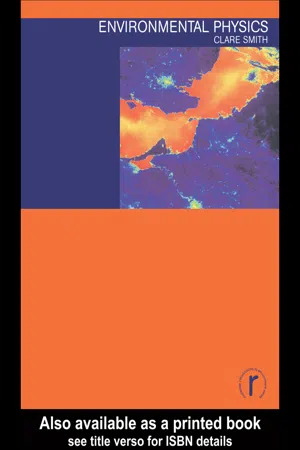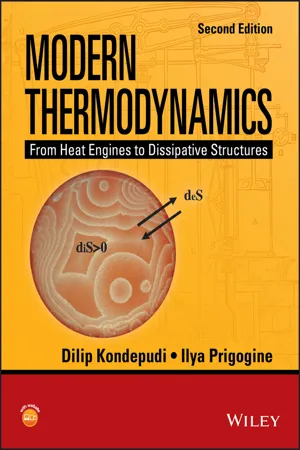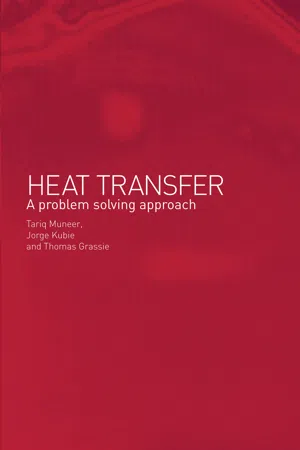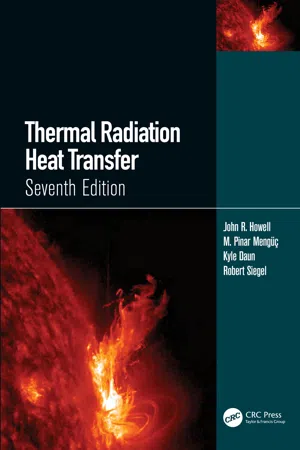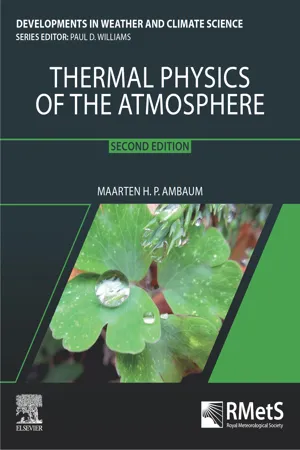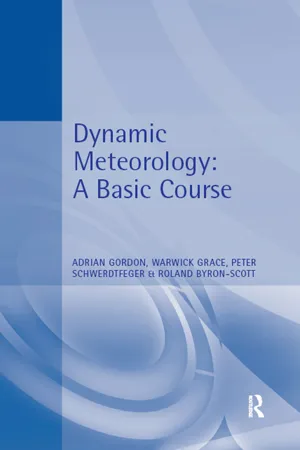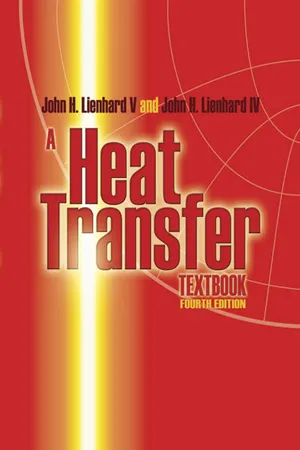Physics
Heat Radiation
Heat radiation refers to the transfer of heat energy in the form of electromagnetic waves. It occurs through the emission and absorption of infrared radiation by objects. This process does not require a medium for heat transfer, making it distinct from conduction and convection.
Written by Perlego with AI-assistance
Related key terms
Related key terms
1 of 4
Related key terms
1 of 3
11 Key excerpts on "Heat Radiation"
- eBook - ePub
Light and Optics
Principles and Practices
- Abdul Al-Azzawi(Author)
- 2018(Publication Date)
- CRC Press(Publisher)
3 Thermal Radiation 3.1 INTRODUCTIONIn the absence of heat, life cannot be sustained in the universe. Thermal radiation serves as an essential ingredient for the formation (and existence) of life in the cosmos Thermal radiation represents a finite region of the electromagnetic spectrum.Thermal imaging cameras permit the ability to observe the flow of thermal energy between two bodies. Thermal images from space have illustrated the flow of energy within the universe.Thermal radiation is the transfer of energy by electromagnetic waves, which have a range of wavelengths. One example of thermal radiation heat transfer is that of energy transfer between the Sun and the Earth. The emitted radiant heat is the net flow of heat from a higher temperature material to a lower temperature material. The high temperature material emits energy and the low temperature material absorbs this energy. Many developing countries have exploited this principle as a means of renewable solar energy. This transfer (or flow) is dependent on a material’s ability to transmit, reflect or absorb thermal energy. In this chapter, the nature of thermal radiation, its characteristics, and properties are presented.The experiment included in this chapter requires an understanding of the concepts of solar radiation intensity levels and measurements when using a solar radiation meter. The solar radiation variation during the day will be measured and studied. Also the sun positions during the day hours will be studied.3.2 THERMAL RADIATIONThermal radiation is the electromagnetic radiation emitted by a body as a result of its temperature. For a net thermal radiation interchange of energy between two bodies to occur, there must be a temperature difference. The rate at which the thermal radiation interchange occurs is proportional to the difference of the fourth powers of their absolute temperatures. For a better understanding of thermal radiation, it will be necessary to study several different disciplines: - eBook - ePub
- Clare Smith(Author)
- 2004(Publication Date)
- Routledge(Publisher)
3 Heat and radiationHeat is a form of energy that is present in all matter. It is important in human energy use, biologically and throughout the natural environment. The following key concepts are covered in this chapter:• Heat is a form of energy, governed by the laws of thermodynamics• Heat can be transmitted by convection, conduction and radiation, which describe important energy flows in both the built and natural environments• Heat engines convert from heat to useful mechanical work, whose thermodynamic efficiency is constrained by their precise physical configuration• The electromagnetic spectrum covers a wide range of radiation types, all with similar properties• Many inaccessible environmental systems can be monitored by means of remote sensing, allowing sophisticated investigations given sufficient understanding of the properties of radiationHeat forms a major part of energy consumption, with many opportunities for reducing energy use, and is also relevant biologically as all living things must balance their heat budgets to maintain temperature within a tolerable range. Radiant heat is a form of electromagnetic radiation, which covers the spectrum from X-rays to radio waves, all having certain properties in common. One application requiring an understanding of the properties of radiation is remote sensing, used in many environmental studies.Heat and temperatureHeat is a measure of the thermal energy of vibrating molecules. The hotter a substance is, the more its molecules vibrate. As heat is a form of energy, it is measured in joules, and can be converted into other energy forms such as motion or electricity. It is governed by the First Law of Thermodynamics, which is the law of conservation of energy—that energy (as heat or other forms) can never be created or destroyed.Temperature is a property of an object that determines the direction in which heat flows. According to the Second Law of Thermodynamics, when heat flows it will always go from a hotter object to a cooler one. Temperature and heat are linked, but not equivalent. Two objects at the same temperature may contain very different amounts of heat; and the addition of heat to an object does not always result in an increase in temperature. - eBook - ePub
Modern Thermodynamics
From Heat Engines to Dissipative Structures
- Dilip Kondepudi, Ilya Prigogine(Authors)
- 2014(Publication Date)
- Wiley(Publisher)
11 Thermodynamics of RadiationIntroduction
Electromagnetic radiation, which interacts with matter, also reaches the state of thermal equilibrium with a definite temperature. This state of electromagnetic radiation is called thermal radiation, also called Heat Radiation in earlier literature. In fact, today we know that our universe is filled with thermal radiation at a temperature of about 2.73 K.It has long been observed that heat transfer can take place from one body to another in the form of radiation with no material contact between the two bodies. This form of heat was called ‘Heat Radiation’. When it was discovered that motion of charges produced electromagnetic radiation, the idea that Heat Radiation was a form of electromagnetic radiation was taken up, especially in the works of Gustav Kirchhoff (1824–1887), Ludwig Boltzmann (1844–1906), Joseph Stefan (1835–1893) and Wilhelm Wien (1864–1928), and its thermodynamic consequences were investigated [1].11.1 Energy Density and Intensity of Thermal Radiation
We begin by defining basic quantities required to study the properties of thermal radiation (here we follow the classic work of Planck on thermal radiation [1]). Radiation is associated with energy density u, which is the energy per unit volume, and specific intensity or radiance, I, which is defined as follows (Figure 11.1a ): the energy incident per unit time on a small area, dσ, due to radiation form a solid angle dΩ (=sin θ dθ dϕ), which makes an angle θ with the surface normal and equals I cos θ dΩ dσ. The total amount of radiation incident on one side of the area dσ (Figure 11.1b ) is equal to ∫π/2 θ = 0 ∫ϕ = 0 2π I cos θ dΩ = ∫π/2 θ = 0 ∫ϕ = 0 2π I cos θsin θ dθ dϕ = πI. The quantity πI is called the radiation intensity or irradiance or radiant flux density. Electromagnetic radiation has two independent states of polarization. The above quantities can be defined for each independent state of polarization. For unpolarized light, as in the case of thermal radiation, the total intensity is the sum of the intensities of the two independent states of polarization. A similar definition can be used for radiation emitted from a small surface area dσ, in which case πI is the per unit area of the surface, called radiation intensity or irradiance - eBook - ePub
Heat Transfer
A Problem Solving Approach
- Kubie Jorge, Tariq Muneer, Grassie Thomas(Authors)
- 2012(Publication Date)
- Routledge(Publisher)
9 Thermal radiation
9.1 Introduction
In contrast to convection and conduction, heat transfer by thermal radiation does not require the presence of matter. However, as we shall see in the following sections, its interaction with matter is of great importance in many natural and industrial processes. In introducing radiation , we will first present the fundamental concepts necessary for its understanding.9.1.1 Fundamental concepts
Through the vibration and transition of electrons within atoms, all matter emits radiation. Radiation may be considered as the propagation of either electromagnetic waves , or as photons or quanta . The internal energy, or temperature, of a medium is a measure of the degree of vibration and excitation of the electrons within that medium. For the present case, as T S > T sur , while both the surroundings and the solid emit radiation, the net radiant energy exchange from the solid to the surroundings, q rad, net, will be positive. The solid will therefore cool as it's internal energy decreases until thermal equilibrium is reached.For most solids and liquids, radiation emitted by interior molecules is absorbed by those adjacent, and hence does not reach the medium's surface. Consequently, radiation may be considered to be a surface phenomenon, originating from molecules that are within a distance of approximately 1µm of the surface. As radiation may be considered to have the form of electromagnetic waves, it will therefore have standard wave properties of frequency, f , and wavelength, λ . The relationship between these two properties is as given inwhere c is the speed of light in the medium (in a vacuum c o = 2.988 × 108 m/s).Within the spectrum of electromagnetic radiation, thermal radiation is emitted between approximately 0.1 and 1000µm. This includes a portion of the UV range (0.01–0.4µm), and all of the visible and infrared. All surfaces emit radiation. Both the magnitude of the radiation at a specific wavelength, and its spectral distribution, are dependent on both the temperature, and the properties of the emitting surface. Hence, the rate of thermal radiation heat - eBook - ePub
- R.A. Edwards(Author)
- 2014(Publication Date)
- Pergamon(Publisher)
CHAPTER 17Thermal Radiation
Publisher Summary
This chapter discusses concept and measurement techniques of thermal radiation. Radiation is defined as the mode of transmission of heat in which a hotter body loses heat and a colder body receives heat by a means of a process occurring in some intervening medium that thereby does not itself become hot. All electromagnetic waves of whatever wavelength travel with the same speed in a vacuum. The longest electromagnetic waves are produced by alternating devices, such as electrical generators. Electromagnetic waves possess the general properties of wave motion, that is, reflection, refraction, diffraction, interference, etc. A radio micrometer is a quick-acting, sensitive instrument designed by Boys, which is free from zero error and which combines thermocouple and galvanometer. A bolometer is an instrument originally designed by Langley. Its action depends on the variation of resistance with temperature of electrical conductors, notably platinum. The experiments show that the best radiators are dull black surfaces and the worst are bright polished surfaces.17.1 Electromagnetic Radiation
Radiation, as applied to heat transmission, has been defined as the mode of transmission of heat in which a hotter body loses heat and a colder body receives heat by means of a process occurring in some intervening medium which does not itself thereby become hot. This definition of radiant heat is a very correct one and certainly distinguishes it from conduction and convection but leaves one to ask the obvious question: “What is the nature of the process which occurs in the intervening medium?” Without some sort of answer to this question the definition does not take us very far. In thermal radiation the passage of “heat” does not heat up the space through which it passes and since, in fact, radiant heat may pass through a vacuum, it is difficult to see how the space can - eBook - ePub
- John R. Howell, M. Pinar Mengüc, Kyle Daun, Robert Siegel(Authors)
- 2020(Publication Date)
- CRC Press(Publisher)
Chapter 19 .1.3 Thermal Radiation and Thermodynamics
The laws that govern thermal radiation largely descend from the First Law of Thermodynamics (conservation of energy) and the Second Law of Thermodynamics. The latter can be stated in several ways, but broadly concerns the increase in entropy principle, or, alternatively, the direction of time.Application of the First Law is usually quite straightforward. Energy must be conserved across interfaces, i.e. applying the First Law over a control surface, which envelops no mass, shows that the radiation incident upon a surface must exactly balance the absorbed, reflected, and, in the case of semitransparent surfaces, transmitted radiation. By extending the control volume to include mass, it is possible to relate radiative transfer to other modes of heat transfer. The net rate at which radiation is absorbed by a surface can be linked to the rate at which the temperature of a surface rises, or the rate at which heat is conducted through the surface. In the case of a participating medium, the difference between absorbed and emitted radiation at any given point becomes a volumetric radiative energy source term in a coupled radiation-advection-diffusion equation.Concepts based on the Second Law are just as important, if more nuanced. In its most fundamental form, energy transfer can be envisioned as the way by which systems reach thermal equilibrium with their surroundings. When a system is at thermal equilibrium with its surroundings, it is in a state of uniform thermal potential, and there can be no net, spontaneous energy transfer across the system boundaries without some work input. This is the Clausius statement - eBook - ePub
- Keith J. Moss(Author)
- 2015(Publication Date)
- Routledge(Publisher)
Chapter 4Heat RadiationNomenclature
a absorptivity A surface area of radiator/receiver (m2 ) c velocity of wave propagation (m/s) C 1 constant (Wμ m4 /m2 ) C 2 , C 3 constants (μ mK) dt temperature difference (K) e emissivity eh r (F 1,2 )h r heat transfer coefficient for radiation from a grey body (W/m2 K) exp. exponential exF 1,2 form factor, view factor h r heat transfer coefficient for radiation from a black body (W/m2 K) I heat flux, intensity of monochromatic radiation, intensity of Heat Radiation exchange solar constant (W/m2 ) ø function of prt plane radiant temperature (°C) Q rate of energy flow (W) r reflectivity S distance between radiator and receiver (m) T absolute temperature (K) t transmissivity t a air temperature (°C) t c dry resultant temperature/comfort temperature (°C) t r mean radiant temperature (°C) t s surface temperature (°C) U thermal transmittance coefficient (W/m2 K) v frequency (Hertz, cycles/s) vrt vector radiant temperature (°C) λ wavelength (μ m) σ Stefan–Boltzman constant of proportionality (W/m2 K4 ) 4.1 Introduction
A simple definition of Heat Radiation would be: the interchange of electromagnetic waves between surfaces of differing temperatures which can see each other. In fact, the full definition is extensive and complex and requires substantial initial briefing and qualification before recourse can be made to practical applications.All surfaces which are above absolute zero (−273.15°C or 0.0 K) are emitting radiant heat or absorbing, reflecting and transmitting Heat Radiation depending upon whether they are emitting surfaces or receiving surfaces and upon whether the material is opaque or transparent. The distinction between an emitting surface and a receiving surface is dependent upon its temperature in relation to other surfaces it can ‘see’.One of the major differences between Heat Radiation exchange and that of heat conduction and heat convection is that it does not require an exchange medium. The sun transfers its heat by radiation through space to the Earth’s atmosphere through which it passes to the surface of the Earth. The ozone layer, atmospheric particles, condensing water vapour and dust act as filters to solar radiation reducing its intensity at the Earth’s surface. The effect of dust and other particles in the air has the same filtering effect for radiant space heaters which results in a reduction in heat flux at the receiving surfaces. - eBook - ePub
- Maarten H.P. Ambaum(Author)
- 2020(Publication Date)
- Royal Meteorological Society – Elsevier(Publisher)
Chapter 9: Thermal radiation Abstract The Sun's radiation is the ultimate source of practically all energy on the Earth. The differential heating of the Earth makes the atmosphere unstable and sets it in motion. Here we introduce some of the key radiative processes involved. We mainly concentrate on the thermodynamic aspects of radiation rather than the molecular structure of absorption and emission spectra. Keywords radiation; Kirchhoff's law; Planck law; Stefan–Boltzmann law; Wien displacement law; greenhouse effect; climate feedbacks The Sun's radiation is the ultimate source of practically all energy on the Earth. The differential heating of the Earth makes the atmosphere unstable and sets it in motion. Here we introduce some of the key radiative processes involved. We mainly concentrate on the thermodynamic aspects of radiation rather than the molecular structure of absorption and emission spectra. 1 9.1 Thermal radiation and Kirchhoff's law All bodies emit electromagnetic radiation, thermal radiation, by virtue of their temperature. Before deriving its detailed characteristics, we will first explore some of the basic features of this radiation. A useful picture to keep in mind is that in quantum mechanics, electromagnetic radiation is mediated by massless particles called photons. Many properties of the radiation field can be understood by interpreting it as a photon gas. Let us consider a vacuum vessel, the walls of which are kept at a certain temperature T. What is the nature of the equilibrium thermal radiation in the vessel? How much energy is associated with the thermal radiation? It is convenient to think of the volumetric radiative energy density; radiative energy per unit mass cannot be defined because photons have no mass - Keith Moss(Author)
- 2002(Publication Date)
- Routledge(Publisher)
4 Heat RadiationNomenclatureaabsorbtivity Asurface area of radiator/receiver (m2 )cvelocity of wave propagation (m/s) C1constant (Wμm4 /m2 )C2constant (μmK) C3constant (μmK) eemissivity ehr , (F1 ,2 )hheat transfer coefficient for radiation from a grey body (W/m2 K)exp (ex)ffunction of F1,2form factor, view factor hrheat transfer coefficient for radiation from a black body (W/m2 K)Iheat flux, intensity of monochromatic radiation, intensity of Heat Radiation exchange, solar constant (W/m2 )Prtplane radiant temperature (°C) Qrate of energy flow (W) rreflectivity Sdistance between radiator and receiver (m) ttransmissivity Tabsolute temperature (K) taair temperature (°C) tcdry resultant temperature/comfort temperature (°C) trmean radiant temperature (°C) Uthermal transmittance coefficient (W/m2 K)vfrequency (Hz cycles/s) vrtvector radiant temperature (°C) λ wavelength (μm) σ Stefan-Boltzmann constant of proportionality (W/m2 K4 )4.1 IntroductionA simple definition of Heat Radiation would be the interchange of electromagnetic waves between surfaces of differing temperatures which can see each other. In fact the full definition is extensive and complex and requires substantial initial briefing and qualification before recourse can be made to practical applications.All surfaces which are above absolute zero (–273.15°C or 0.0 K) are emitting radiant heat or absorbing, reflecting and transmitting Heat Radiation depending upon whether they are emitting surfaces or receiving surfaces and upon whether the material is opaque or transparent. The distinction between an emitting surface and a receiving surface is dependent upon its temperature in relation to other surfaces it can ‘see’.- eBook - ePub
- Adrian Gordon, Warwick Grace, Roland Byron-Scott, Peter Schwerdtfeger(Authors)
- 2016(Publication Date)
- Routledge(Publisher)
19 RADIANT ENERGY TRANSFER19.1 HISTORICAL CONCEPTS, CAVITIES AND BLACK BODIESThe very existence of the earth and the maintenance of its important and life-sustaining atmospheric processes depends on radiant energy transfer. While the sun is the fundamental source of radiant energy, all exposed terrestrial surfaces and transparent or translucent fluids, particularly gases, participate in an interdependent and complex range of radiant processes.The science of thermal radiation had its origins in the caloric theory in which hot and cold radiations were accepted concepts. Since a block of ice was thought to radiate cold to any body placed beside it, it is evident that these concepts were based on very subjective and shallow impressions. A simple further philosophical experiment, in which are considered the processes at play when water ice at 0°C faces dry ice (CO2 ) at −80°C, highlights the arising dilemma as to which body is radiating what type of radiation.Because of such logical problems, it was essential to return to the fundamental observation that even in a vacuum, thereby ruling out the possibility of heat transfer by conductive or convective means, two isolated bodies at initially different temperatures ultimately come to thermal equilibrium at the same temperature. From this basis it is possible to make progress with physical explanations.Prevost put forward his theory of exchanges in 1792 to offer a logically satisfactory explanation of radiation transfer between surfaces at all temperatures. This theory, which might more accurately be called the theory of continual exchange, states that a body emits radiant energy at all temperatures and at a rate which increases with the temperature. The settling down of a body to a constant temperature then indicates the fact that it is receiving radiation from the surroundings at the same rate as it is emitting. Thermal equilibrium is thus dynamic rather than static and leads to the question of the relationship between the processes of emission and absorption. - eBook - ePub
A Heat Transfer Textbook
Fourth Edition
- John H Lienhard, John H Lienhard(Authors)
- 2013(Publication Date)
- Dover Publications(Publisher)
ART IVTHERMAL RADIATION HEAT TRANSFER
Passage contains an image
10. Radiative heat transfer
The sun that shines from Heaven shines but warm,And, lo, I lie between that sun and thee:The heat I have from thence doth little harm,Thine eye darts forth the fire that bumeth me:And were I not immortal, life were doneBetween this heavenly and earthly sun.Venus and Adonis, Wm. Shakespeare, 159310.1 The problem of radiative exchange
Chapter 1 included the elementary mechanisms of Heat Radiation. Before we proceed, you should reflect upon what you remember about the following key ideas from Chapter 1 :• Electromagnetic wave spectrum• Heat Radiation & infrared radiation• Black body• Absorptance, α• Reflectance, ρ• Transmittance, τ• α + ρ + τ = 1• e(T) and eλ(T) for black bodies• The Stefan-Boltzmann law• Wien’s law & Planck’s law• Radiant heat exchange• Configuration factor, F1−2• Emittance,• Transfer factor, 1−2• Radiation shieldingThe additional concept of a radiation heat transfer coefficient was developed in Section 2.3 . We take these concepts for granted in what follows.The heat exchange problemFigure 10.1 shows two arbitrary surfaces radiating energy to one another. The net heat exchange, Qnet , from the hotter surface (1) to the cooler surface (2) depends on the following influences:Figure 10.1 Thermal radiation between two arbitrary surfaces.• T1 and T2 .• The areas of (1) and (2), A1 and A2 .• The shape, orientation, and spacing of (1) and (2).• The radiative properties of the surfaces.• Additional surfaces in the environment, which may reflect radiation from surface (1) to surface (2)• The medium between (1) and (2) if it absorbs, emits, or “reflects” radiation. (When the medium is air, we can usually neglect these effects.)If surfaces (1) and (2) are black, if they are surrounded by air, and if no heat flows between them by conduction or convection, then only the first three considerations are involved in determining Qnet . We saw some elementary examples of how this could be done in Chapter 1
Index pages curate the most relevant extracts from our library of academic textbooks. They’ve been created using an in-house natural language model (NLM), each adding context and meaning to key research topics.
Explore more topic indexes
Explore more topic indexes
1 of 6
Explore more topic indexes
1 of 4

